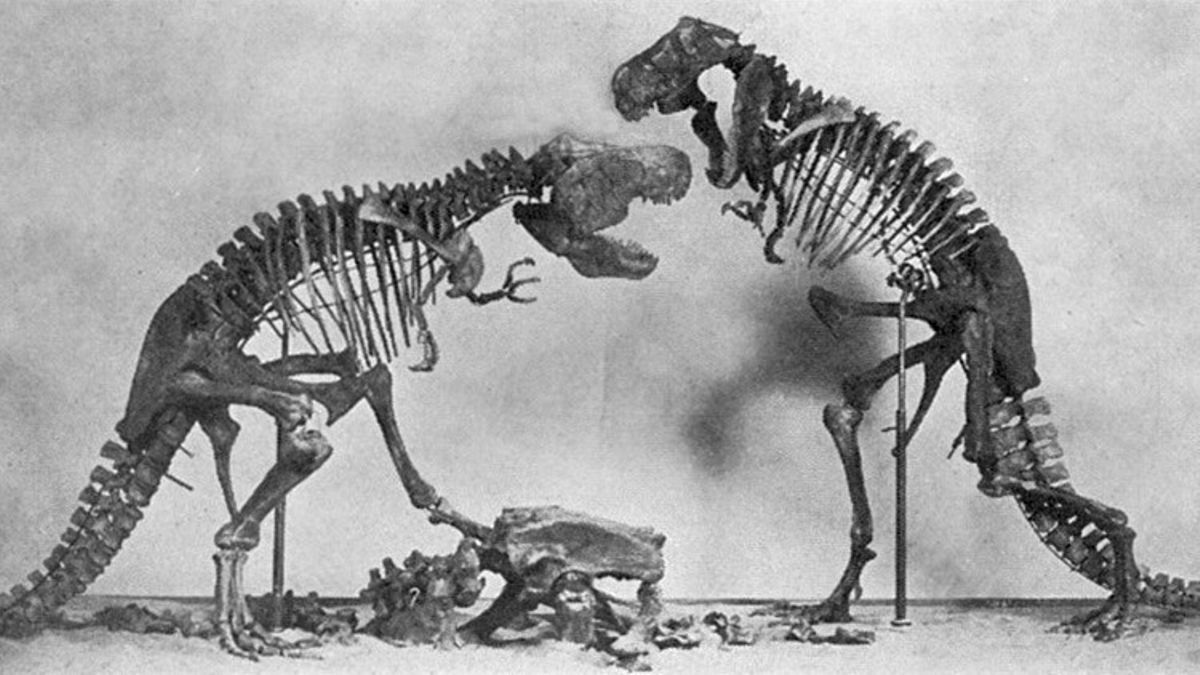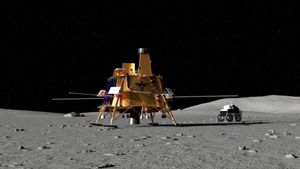JAKARTA - Millions of years ago, ancient creatures such as dinosaurs suddenly became extinct from planet Earth. The impact of a giant asteroid measuring 81 kilometers (50 miles), is believed to be one of the causes of the extinction of dinosaurs from the face of the Earth.
The event is thought to have triggered a wave of mass extinctions, which destroyed 75 percent of the habitat and life on Earth's surface. That fact is reinforced by a giant crater near Chicxulub, off the coast of Mexico.
As summarized from The Guardian, Tuesday, June 30, there are many other opinions that explain the cause of the extinction of dinosaurs from the face of Earth. Some of them have views about extreme climate change and volcanic eruptions.
"When we create different scenarios for either two things happening together, or completely separate, we see that the asteroid is the only [event] that can completely wipe out the dinosaurs," said Dr. Alfio Alessandro Chiarenza, a researcher at University College London. .
Although this opinion may still be refuted, geologists have succeeded in extracting core samples from the giant Chicxulub crater at a depth of 500 to 1,300 meters. Where they found melted rock, charcoal, as evidence if a giant asteroid hit Earth.
However, they did not find any sulfur in the Earth's core which should be a typical marker of a volcanic eruption. The researchers also did not find the fact that the asteroid impact caused a reduction in sunlight.
"We show that only asteroid impacts, especially with their prolonged consequences, are the real drivers of extinctions," he continued.
In that incident, the asteroid was said to be capable of triggering a tsunami that towered several hundred meters, hurling rock and dust at incredible speeds - material deposited about 130 meters deep in just one day after the collision.
According to the researchers' calculations, about 325 billion metric tons of sulfur have been aired due to related impacts. This sulfur content is four times higher than that released during the eruption of Mount Krakatoa in 1883, which cooled the entire world for the following five years.
"Even if a volcanic eruption had not occurred, extinctions would have occurred in any case because the event (impact) was severe enough to eradicate the habitat of dinosaurs around the world," he added.

Chiarenza believes that volcanic activity and asteroid impacts played a different role in the extinction of three-quarters of plant and animal species on Earth 66 million years ago. It marks the end of the Cretaceous period and the disappearance of non-avian dinosaurs.
After experiencing a major disaster, the dinosaur population was really small and on the verge of extinction. To be able to recover and wake up is a difficult thing to do because dinosaurs are not very good adapters.
The remaining dinosaur eggs after a disaster take a long time to hatch and develop into adult dinosaurs. The length of this incubation process made dinosaurs vulnerable to predatory threats.
"In one day, in the blink of a geological eye, it was all over for them (the dinosaurs)," said Chiarenza.
The English, Chinese, Japanese, Arabic, and French versions are automatically generated by the AI. So there may still be inaccuracies in translating, please always see Indonesian as our main language. (system supported by DigitalSiber.id)








